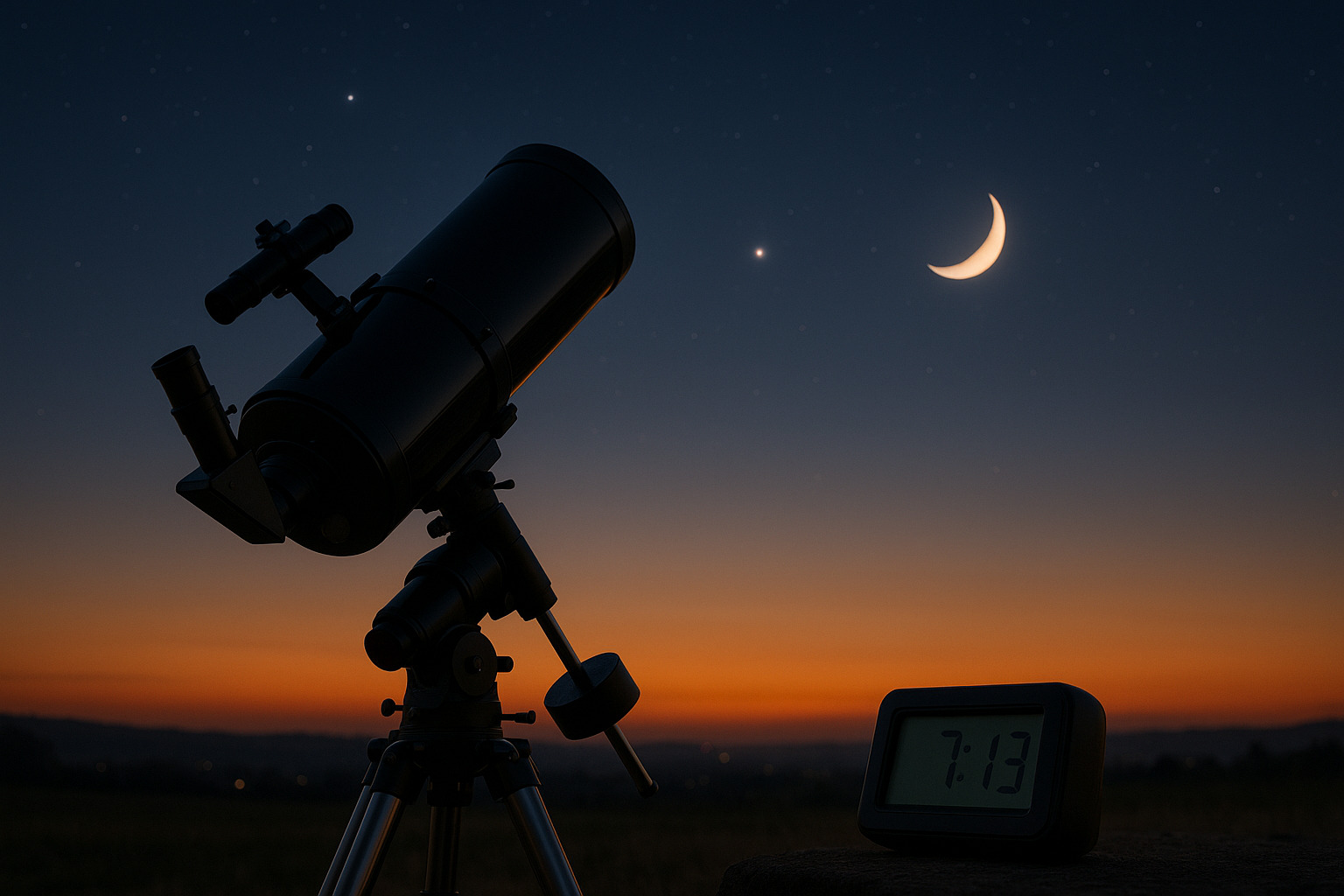Observing planets through a telescope or even with the naked eye can be rewarding, but timing makes all the difference. Each planet has specific viewing periods when it appears brighter, larger, or higher in the sky. This guide outlines the best times to observe each of the major planets and practical steps to make sure you never miss a key event.
Understanding Planetary Opposition and Conjunction
The best viewing times often occur around opposition for outer planets and greatest elongation for inner planets.
- Opposition happens when a planet is directly opposite the Sun from Earth’s perspective, making it brighter and visible all night.
- Conjunction or elongation refers to inner planets like Mercury and Venus, which are best observed when farthest from the Sun in the sky.
Tracking these events on astronomy calendars ensures you target the best observation windows.
Mercury
Mercury stays close to the Sun, making it challenging to spot.
- Look for it shortly after sunset or before sunrise during its greatest elongation.
- Best viewed during spring evenings and autumn mornings in the Northern Hemisphere.
- Use a timer or alarm to alert you just before twilight ends since Mercury quickly sets below the horizon.
Venus
Venus is often called the “Evening Star” or “Morning Star.”
- Best observed during greatest elongation, when it shines brightest.
- Visible just after sunset in the west or before sunrise in the east.
- Track its crescent phases through a telescope for stunning details.
- Setting an online alarm clock a few minutes before sunset helps you prepare for its short visibility window.
Mars
Mars is most impressive during opposition.
- Every 26 months, Mars comes closer to Earth, appearing large and bright with visible surface features like polar caps.
- View it high in the sky near midnight for the sharpest image.
- To catch fine details, plan observing sessions over several nights, using an online stopwatch to time each viewing session consistently.
Jupiter
Jupiter offers breathtaking views of its cloud bands and Galilean moons.
- Best viewed around opposition, occurring annually.
- The planet remains bright for weeks before and after opposition, giving ample time to observe.
- Watching the moons’ transits requires precise timing, so keep an online clock handy to follow predicted schedules accurately.
Saturn
Saturn’s rings are spectacular at opposition when the planet appears brighter and closer.
- View it high in the southern sky for the clearest view.
- During ring tilt changes, catching subtle details in the rings becomes easier.
- A countdown timer can help coordinate your setup before the planet rises to its highest point.
Uranus and Neptune
These distant planets require darker skies and a telescope.
- Best observed near opposition when they are at their brightest.
- Uranus may appear greenish, while Neptune shows a faint bluish hue.
- Patience is key, so use an online stopwatch to manage long observation sessions, allowing you to track how long you study each target.
Planning Observation Sessions
1. Check Astronomy Calendars
Use apps or astronomy websites to mark opposition dates, elongations, and conjunctions.
2. Monitor Sky Conditions
Clear, dark skies away from city lights improve visibility. High-altitude planets are less affected by atmospheric distortion.
3. Use Timers and Alarms
Set an online alarm clock or countdown timer to remind you of critical observation windows. For meteor showers or planetary transits, precision can mean witnessing a rare event.
4. Keep Notes
Record observation details, including date, time, and viewing conditions. Use a stopwatch to measure how long you study each planet, improving consistency across sessions.
Maximizing Each Viewing
- Start with binoculars before switching to a telescope.
- Let your eyes adjust to the dark for at least 20 minutes.
- Observe repeatedly over multiple nights to notice changes in brightness, position, or surface features.
By timing your sessions around key planetary events and using simple tools like online clocks and stopwatches, you can experience planets at their best. Whether it’s Jupiter’s swirling storms, Saturn’s iconic rings, or Venus’s glowing crescent, proper timing transforms casual stargazing into meaningful planetary observation.
